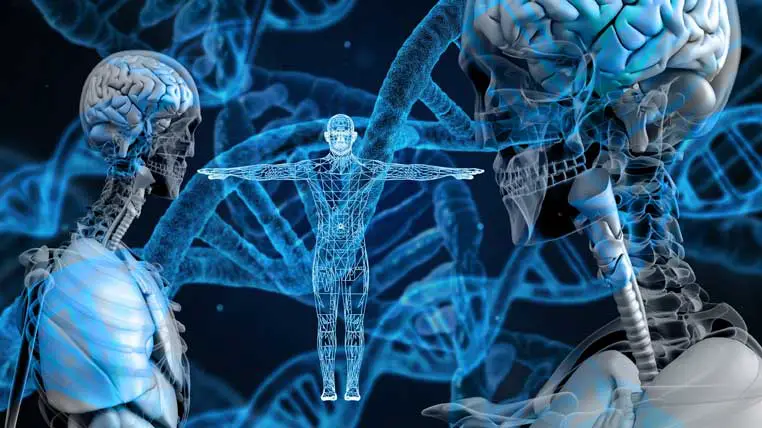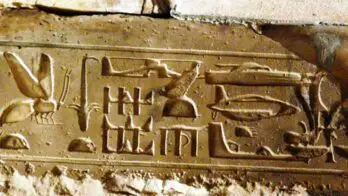The origin of life on Earth remains one of the most significant biological mysteries, with implications for both physiology and religion.
Discussions and debates among materialists and spiritualists have suggested that human genetic engineering may hold the key to unlocking the secrets of humanity’s origin.
Furthermore, there is a need for a greater understanding of why certain human races disappeared after reaching their evolutionary peak and why new races with advanced physiological and social development levels have emerged beyond the scope of normal human evolution.
These questions have led some to propose the possibility of creating a perfect human race through human genetic engineering.
In contrast, others raise concerns about human enhancement’s ethical and moral implications through genetic engineering in humans.
The Origin of Life
The origin of life has been a subject of various theories throughout history, including spontaneous generation, which proposes that living beings emerge suddenly from dead matter.
For example, the Latin poet Publius Virgilius Maro believed bees were born from the intestines of a dead bull, and Ambroise Pare, a French surgeon, suggested that stones could give rise to frogs.
Even in the seventeenth century, the physiologist Van Helmont believed that fermented wheat could transform into mice.
However, Pasteur’s studies ultimately demonstrated the impossibility of spontaneous generation.
In 1976-1977, some of the world’s most prominent paleontologists, including Richard Leakey (Kenya), Maurice Taieb, Yves Coppens, Maurice Klein, and Jean de Grouchy (France), Donald Johanson, Job Kalb, and Tom Grey (United States), developed a new and convincing scientific theory regarding the origin and evolution of humanity.
A New Theory Challenges Darwinism
A new theory for the origin and evolution of humanity challenges classic Darwinism, which focuses on how organisms adapt to the environment, followed by the transmission of acquired characteristics and their evolution.
This theory is based on a series of remarkable discoveries made by the Leakey expeditions and the four Franco-American-Ethiopian IARE expeditions in the Afar Triangle, which have sparked discussions about the possibility of human genetic engineering, creating the perfect human race, and human enhancement.
Contrary to the 1960s-1970s idea of genotype variation that considered genetic mutation the primary evolutionary factor, this theory suggests that humanization resulted from the gradual exchange of genes between populations through immigration and emigration.
This led to changes in the combination and frequency of the genes of various human groups.
The lack of data on which the Darwinian theory was built has been demonstrated as the evolutionary process and adaptation begin after a certain level of species development.
This opens up possibilities for human enhancement, a phenomenon Grouchy aptly termed as the “indispensable uncertainty,” involving the first translocation within the species, then passed on to its descendants.
Furthermore, the genetic theory had yet to notice that animal migrations were limited, making it impossible for apes to cross oceans, mountains, or deserts.
These ideas challenge the scientific world and public opinion, including ethical and moral concerns with human enhancement through genetic engineering in humans.
Moreover, in 1976, it was found that genetic mutations had a minor contribution to the differentiation and evolution of species.
The study of amino acid sequences of many proteins in humans and anthropoid apes revealed minimal differences.
It follows that evolution is primarily due to changes in gene expression.
As a general phenomenon, speciation results from changes in the regulatory system produced by the difference in the chromosomal arrangement.
Of course, humanity was not too pleased to discover that it owed its existence to a series of chromosomal accidents.
However, this discovery may open the prospects of human genetic engineering in order to create a more perfect version of the human race.
How Has Humankind Evolved During History?
For more than 20 million years, hominids have evolved through numerous discontinuous branches, often disappearing at the peak of their physiological development, a clear sign of the aforementioned biological accidents.
In fact, the separation of man from the ape results from two such “accidents,” consecutive or perhaps simultaneous.
Such chromosomal accidents could only occur in a small group of individuals and under particular conditions.
It is likely that a translocation emerged and passed on to their descendants, who in turn interbred, giving rise to the homozygotes.
Through subsequent interbreeding, the chromosomal anomaly gradually became predominant and was reproductively isolated from the rest of the species, forming an evolutionary line over time.
The evolutionary journey starts with isolated couples or small groups rather than transmutations between species.
These incidents were plentiful enough to justify the “attempts” of humanization, which have been found in most of the Old World, including Central and Southern Europe, Eastern China, Indonesia, and Northwest and Southeast Africa.
The only successful “attempt” was in the Afar (Ethiopia) and Olduvai (Kenya) regions of Africa.
Human evolution involves several necessary steps, including the emergence of the order of primates 70 million years ago from arboreal mammals, which diversified into several evolutionary lines.
One of these was the order of Hominids, which emerged 30 million years ago. The Pongids (ancestors of the great modern anthropoid apes) and Hominids (from which humans evolved) were developed from Hominids.
The Parapithecines, Propliopithecines, Oreopithecines (all of which disappeared two million years ago), and Ramapithecines separated 15 million years ago, with the latter diverging five million years ago into four main branches:
- The Ancestralus branch, of which the Australopithecines (discovered in Kenya and China) were part and disappeared two million years ago.
- The Robustus branch, from which the Paranthropus (Kenya), Meganthropus (Java), and Zinjanthropus (Tanganyika) descended, disappeared one million years ago.
- The Africanus branch, including Homo Habilis (discovered in Tanzania, Tanganyika, and Israel), disappeared 650,000 years ago.
- The Homo branch is the only one to have survived.
The evolution of the Homo branch began from a group of Australopithecines called Gracili (emerging 3.8 million years ago), which evolved into Early Homo (emerging 2.6 million years ago), from which Homo Erectus separated one million years ago, with its four subspecies:
- The Javanese Pithecanthropus
- The Chinese Pithecanthropus (Sinanthropus)
- The North African Pithecanthropus (Atlanthropus)
- The Mauer Man
Homo Erectus disappeared 400,000 years ago, opening the third significant hiatus in paleontology.
The Birth of Homo Sapiens
Before the emergence of the following three branches of Homo sapiens around 150,000 years ago, only a few fossils belonged to groups called Presapiens, which were discovered in England, France, and Germany.
It appears that at a crucial moment in human evolution, the three truly human branches of Homo erectus suddenly and inexplicably disappeared:
- Homo sapiens palestinianus disappeared without any apparent reason 70,000 years ago.
- Homo sapiens neanderthalensis (discovered in Neanderthal, Germany), an enigmatic race with a height of 5 feet (1.55 meters), a cranial capacity of 1,625 cm3, and a typically human denture, disappeared without a trace from Europe and Africa 30,000 years ago, surviving only in Asia.
- Homo sapiens with the Cro-Magnon, Chancelade, and Grimaldi groups, which appeared 25-30,000 years ago, remained the most evolved prehistoric human races.
Today, the species Homo sapiens is commonly divided into four primary races based on subjective criteria of hereditary physical characteristics rather than genetic markers:
- European race (white)
- Mongoloid race (yellow)
- Negroid race (black)
- Australoid race (black)
The Australoid and Mongoloid races separated 600,000 and 100,000 years ago, respectively, but still maintain some Neanderthal anthropometric characteristics such as an average height of 5 feet (1.55 meters), pigmentation, cranial capacity, and characteristic facial structure.
Part of the Siberian Mongoloid population migrated across the Bering Strait almost 70,000 years ago, populating the two Americas.
In contrast, Australoid tribes migrated from Jawa to Australia, Tasmania, and New Guinea 30,000 years ago.
The European and Negroid races (which come from the same population group) have the smallest spread in terms of the area of appearance and initial extension and are distinguished by their tall stature – an average of 5.7 feet (1.75 meters).
They appeared 30,000 years ago under still unclear conditions.
Part of the Cro-Magnon group migrated to North Africa, where they acquired the characteristics of the Negroid race – prognathism, pigmentation, and specific pilosity – due to particular environmental conditions.
The other part remained in Europe, defining the white race and the Grimaldi and Chancelade groups.
However, the sudden increase in height appears strange and unjustified if we consider that from the slender Australopithecines with a height of 3.9 feet (1.2 meters) to Neanderthal Man, which spanned 3.6 million years, only an increase of 12-13 inches (30-35 centimeters) was achieved.
The Mystery of the Neanderthal Man
What could have caused the dramatic increase in brain capacity in only 5,000 years of evolution, the period that passed between the disappearance of Homo neanderthalensis from Africa and Europe and the emergence of Homo sapiens (Cro-Magnon)?
Was it a form of human enhancement, possibly some type of human genetic engineering? If so, who was responsible for it?
As early as 3.8 million years ago, the gracile australopithecine, whose skeleton was discovered in 1974 in Afar, had long and straight bones, indicating an exclusive bipedal gait.
At the same time, the early Homo family, discovered near her (consisting of 5-7 fossilized individuals in that period), already had “U”-shaped maxillae, thin and long hands, and well-developed dentition (especially incisors and canines), suggesting that they had started to consume meat.
However, the evolution of the cranial box, which determines the size of the brain and the degree of intelligence, occurred strangely.
From Australopithecines (700 cm3) to Homo erectus (900 cm3), only a 200 cm3 increase took place over 2-3 million years, and then there was a significant jump to Homo neanderthalensis (1,600 cm3) and Homo sapiens (1,700 cm3) in just 300,000 years.
What precisely caused these significant leaps in human evolution? Some theories even suggest that some form of human genetic engineering could have happened during that period.
No example in the history of terrestrial life supports the claims of those who consider these jumps to be minor accidents.
No scientific theory is well-argued enough to comprehensively explain the journey of the human species from its origins to the present.
As the great Kenyan paleontologist, Richard Leakey concludes at the end of his film, The Making of Mankind, “[…] only intense and thorough scientific research can uncover the beautiful secrets of the history of the Homo sapiens species, the only one on Earth that has reached the level of self-consciousness.”
What is Neoteny?
One possible explanation for the mysteries of paleontology is neoteny, a biological mechanism that enables certain species to retain infantile or neonatal characteristics throughout life.
This process underlies human evolution from primates, but only genetic control can trigger it.
The idea that such control could have existed in the evolution of Homo sapiens was first suggested by Dutch anatomist Louis Bolk in the 1920s.
Bolk observed that adult humans and newborn monkey cubs shared small maxillae, large brains (comprising 1/15th of body weight), and an erect bipedal stance.
In contrast, adult monkeys have large jaws, brains comprising only 1/10th of body weight, and a four-legged stance.
Bolk’s theory posits that anthropoid monkeys and hominids initially developed similarly, but the rate of evolution toward the adult form of hominids slowed down significantly.
As a result, the descendants of the first hominid species remained in a perpetual newborn state, failing to attain the adult form of anthropoid monkeys.
According to Bolk, neoteny endowed humanity with extraordinary vitality, promoting its evolution.
By progressively endowing hominid generations with the most robust juvenile characteristic – a brain with a large volume compared to the body – the neoteny mechanism transformed sedentary hominids into the most innovative, adaptable, and successful creatures on the planet.
As Bolk states, “The juvenile brain, large and uninhibited, has proven its superiority, establishing its domination in the terrestrial living world.”
Although overlooked at its inception, Bolk’s theory gained almost unanimous support from the world’s leading paleontologists, including Leakey, de Grouchy, Johanson, Gould, Coppens, and Taieb, in the following decades after archaeological expeditions discovered evidence supporting the evolutionary theory of genetic leaps in Africa.
According to the August 1983 issue of the scientific magazine OMNI, discoveries in Afar and Kenya demonstrated that with each new stage of human evolution, the last species had an increased skull box capacity compared to the previous one.
Paleontologists posit that this development of the hominid skull began millions of years ago, as savannas encroached on forests.
Survival without the shelter of trees depended on continuous brain volume growth, capable of conceiving tools, and the adoption of a bipedal vertical position necessary to free hands to use objects.
Specialists understand that neoteny can only be evoked through repeated genetic intervention.
A simple accident cannot impact the evolution of a species, lacking the periodicity and amplitude required for its outcomes’ perpetuation at the historical scale.
Could the human species have undergone deliberate genetic modifications when it was still in its incipient stage of evolution? What is the actual origin of man?
Was someone trying to create the perfect human race through human genetic engineering?
Lucy
Africa is widely recognized as the cradle of humanity, where our distant ancestors descended from trees and began exploring the grassy fields around them millions of years ago.
Paleontologists have uncovered fossils that have increased our knowledge of early humans, but many questions remain unanswered.
The Afar Basin in northern Ethiopia, one of the world’s least hospitable regions, has provided scientists with material to write one of the first pages of humanity’s prehistory and a few other African areas.
In 1974, some unusual remains were discovered in the extremely arid Afar Basin. The excavation team estimated that the remains were over 3 million years old.
The skeleton, dubbed Lucy, showed remarkable signs of evolution compared to the species that preceded it by one million years.
Anthropologist William Chmerny of Idaho State University studied the hominid skeleton found in 1974 by paleontologist Donald Johanson for years, concluding that the pre-human female who lived in Afar is a classic example of neoteny.
Since then, other remains of the same species (Australopithecus afarensis) have been discovered, and remains unearthed in other African sites have also contributed to understanding the development of modern humans’ ancestors.
Among them are some of the oldest fossils ever discovered (Ardipithecus ramidus – around 4.4 million years old) and the oldest modern human fossils – the closest ancestors of modern human beings.
Most archaeologists now agree that Africa is the cradle of humanity, but the lack of evidence attesting to early hominids outside Africa perplexes them.
Human Genetic Engineering Controversies
Why have most fossil discoveries been limited to some regions of the African continent? Were the conditions for evolution there so different from the rest of Africa?
In 1984, Yves Coppens, a professor at the College de France in Paris and one of the discoverers of Lucy, proposed a widely accepted scenario in the scientific world, though not unanimously.
Around eight million years ago, tectonic movements created the Great Rift Valley, which crosses Africa from the Red Sea to Zimbabwe.
This tectonic fault divides East Africa from Central and West Africa. The eastern part of the continent turned into an open savannah from an arid steppe, while the western part is still marked by a humid climate.
Tectonic movements created two regions with extremely different environmental conditions to which various inhabitants had to adapt.
While Central and West Africa are still home to anthropoid primates, such as gorillas and chimpanzees, the inhabitants of the eastern regions gradually evolved to the point of beginning to walk upright.
In the vast and sparsely wooded savannah, bipedal walking gave early humans a clear advantage over other creatures.
This marks the beginning of the human species, and our predecessors began exploring other regions much later.
They first headed south along the Great Rift Valley and eventually populated the entire African continent and, later, the world.
However, theories about humans’ origins and our species’ evolution raise many questions.
This period represents only a moment in geological time, allowing for a maximum of 250 genetic mutations.
Yet, the essential transformations produced in the anatomical details of the Afar hominid, such as a considerable increase in the capacity of the cranial box, bipedal station, long and thin phalanges, straight femurs, and tibias, required approximately two million genetic mutations, which would only be possible in hundreds of millions of years.
Even with the help of neoteny, which reduces the number of genes necessary for change, mutations cannot be triggered and perpetuated by natural genetic accidents.
The manner and causes of these genetic mechanisms remain mysterious.
Still, many researchers believe that they could only appear at least ten times longer than the 15 million years accepted as the interval of the edification of the Homo sapiens species.
Unusual Genetic and Racial Characteristics
The mysteries surrounding humans’ origin and our species’ evolution are deepened by an enigma related to populations with unusual genetic and racial characteristics.
In many legends and documents from ancient peoples, giants with blond or red hair and beards appear with obsessive regularity.
These giants are known under various names, such as Sons of Heaven, Sons of the Sun, Sons of Aurora, Sons of Thunder, Wanni, or Viracochas.
They are invariably linked to the cosmos and considered more the space adjacent to the Earth than a religious taboo.
The legends are categorical.
All the giants came from the sky and returned there after leaving vital knowledge for the survival and evolution of humanity, which was then in the “childhood stage,” ranging from obtaining fire and processing metals to astronomy, architecture, mathematics, geography, and medicine.
Of course, these legends have been treated with irony or indifference.
But is it possible that the origin of humans is hidden somewhere in these fantastic stories?
Could these mysterious “giants” and “gods from the sky” be responsible for the missing stages of human evolution? Could they have attempted genetic engineering in humans to create the perfect human race?
Evidence of human enhancement in ancient times is there. There is compelling evidence of the appearance of a race of people with Europid characteristics 40,000 years ago.
These people had a height between 6 and 10 feet (2-3 meters) and a cranial capacity of 1,800-1,900 cm3.
In 1982, Science et Vie and Stern magazine published a series of scientific articles accompanied by photographs of remarkable paleontological evidence, which provide undeniable proof of the existence of this ancient race.
Despite these significant discoveries, the public remains unaware of many of these findings, causing some to dismiss them as mere “fantasies” of fiction rather than objective reality.
Over the last 150 years, researchers have uncovered countless skeletons and mummies of human races vastly different from today.
These discoveries have forced archaeologists to acknowledge that these variations are not simply genetic anomalies.
Bullets in the Paleolithic?
The origin of humans and our species’ evolution are intriguing enigmas that continue to baffle scientists.
Renowned author Erich von Daniken presented a modern version of Mark Twain’s story “A Yankee at the Court of King Arthur” in his best-selling book “Chariots of the Gods.”
He analyzed the Yakutia enigma, which persists at the Paleontology Museum in Moscow.
It involves a several thousand-year-old wild bull’s skull with a small, perfectly round hole between the arches, through which only a 9 mm caliber bullet could fit.
Von Daniken’s question was obvious: “Who was using Winchester rifles in the Paleolithic?” To this day, paleontologists have yet to find a reasonable explanation for this enigma.
As the French researchers noted in a study published in Science et Vie (1875), evolution is often presented as a continuous process.
However, significant discontinuities between species and inexplicable qualitative leaps have occurred throughout history, particularly in humanization.
Key moments in human history, such as the first time a man kept a stone as a tool instead of throwing it or the first time he uttered a vocalized sound and discovered group solidarity by throwing himself to help a fellow man attacked by an animal, remain a mystery to this day.
The reasons and time for these moments are still unclear.
Despite humans having 15 million years of evolution behind them, they were by no means a species with great chances of surviving.
However, humans have persevered relentlessly on the path of victory for the last 30,000 years, becoming the most evolved terrestrial species today after their tumultuous prehistory and history.
Could the Ancient Aliens Theory Explain Human Evolution?
What caused the inexplicable and rapid evolution of our species?
Erich von Daniken believes that extraterrestrial spacecraft discovered our planet in the distant past.
It is difficult to date precisely when this happened, but the crew determined that Earth met all the conditions for the genesis of intelligent life.
Of course, the humans of those times were not yet Homo sapiens but a different species altogether.
According to von Daniken’s theory, the alien astronauts artificially fertilized several female specimens of this species, put them in a deep sleep, and returned to their point of origin.
They repeated this experiment several times (returning over time) until they eventually created a being with enough intelligence to share social norms with them.
To prevent the danger of devolution, since the original human species had not yet surpassed the wild state and could have mated with animals, the astronauts annihilated the less successful specimens or took them with them to populate other continents (likely the case of the Neanderthal species).
Thus, the first human communities were born, and signs of dexterity in work began to emerge.
“The gods” continued to be interested in transmitting their knowledge, protecting their pupils, showing themselves willing to shield them from danger, and wishing to achieve, even by force, a positive development of the human collective.
Unsuccessful progeny were liquidated (or left to chance, which, in most cases, led to extinction – how many species have vanished over the past few million years, some even amid their development?).
Meanwhile, the others (likely the case of the Cro-Magnon race) enjoyed the conditions conducive to a society capable of development.
Over time, the visitors to Earth transmitted invaluable knowledge to humans, who treated them with boundless respect and kept their memory gratefully for many generations.
However, the strangers did not return, and the human species followed its own evolution.
Endless wars erupted, intertwining like the meshes of a net in history. Cities were ruined, much knowledge was lost, only to be rediscovered later, extraordinary generations succeeded one another, and civilizations flourished and disappeared.
At the time of von Daniken’s hypotheses, a real storm of protests spoke for itself through their diversity.
The paleoastronautic hypothesis upset religious authorities and contradicted current scientific theories.
Its acceptance does not mean the modification of school textbooks alone but rather the revision of our entire way of looking at history and all our knowledge about humanity’s past up to two millennia ago.
This hypothesis is too radical, and more severe issues are involved than the opposition of conservative scientists.
The Laws of Chance
Many conflicts could have been avoided if humanity recognized that all humans belong to the same race and that there were no races in the current sense of the word 30,000 years ago.
The beings that may have intervened in human evolution gave everyone the same chance for development and knowledge.
To provide an analogy, imagine that terrestrial astronauts found intelligent beings on a planet in the universe at a lower level of development than ours.
Would they interfere in the biological or historical evolution of these beings? Would they destroy those whose evolution was deemed too slow to favor others? Would they perform fertilization and hybridization in a group of rational beings, assuming they solved the problem of genetic incompatibility?
Genetic engineering interventions are no longer just theoretical explorations.
The first operations were carried out as early as 1982 when Professor Dr. M. Cline achieved results that exceeded the most optimistic expectations.
Although there is still a long way to go to give this surgery the attributes of a technique for correcting genetic or functional anomalies resulting from acquired pathological conditions after birth, researchers continue to explore the possibility of intervening in non-intelligent terrestrial beings to favor their evolution towards reason.
However, these interventions should not be forced on intelligent beings, which would contradict universally recognized humanitarian principles.
Some authors argue that the “leap to reason” was due to a genetic accident or a series of genetic mutations caused by changes in terrestrial radioactivity, the influence of cosmic factors, or simply the “laws of chance.”
On the other hand, some scientists argue that “nature does not make leaps” and that hominids’ evolution has usually proceeded.
The “gaps” observed in this evolution are explicable by the lack of conclusive information for the respective periods, information that will likely be completed with the progress made by science.
Serious scientific research, free from prejudice, is needed to validate one of these hypotheses or to develop another plausible and verifiable theory in this enigmatic and controversial field of the origins and evolution of man.
Until then, the origin of man remains a fiercely debated subject in the scientific community.
At Ancient Theory we only use trusted sources to document our articles. Such relevant sources include authentic documents, newspaper and magazine articles, established authors, or reputable websites.
- Kari Paul - Three Big Mysteries of Human Evolution We Still Don’t Understand. [Source]
- Carl Zimmer - Great Mysteries of Human Evolution [Source]
- Jean Balthazar, Jean Batelier, Fabienne Bouloc, Olivier Brusset, Pierre Cornillot and Anne Deburge - Last Mysteries of the World. Reader’s Digest, 1996.
- Tom Garlinghouse - Unraveling the Mystery of Human Bipedality. leakeyfoundation.org.
- Charles Q. Choi - Top 10 Mysteries of the First Humans. livescience.com.
- Marie Claire Chelini - 250,000-Year-Old Child Adds to the Mystery of Our Human Origins. Duke University.
- Catherine Brahic - Traces of mystery ancient humans found lurking in our genomes. newscientist.com.
- Bastien Llamas, Eske Willerslev and Ludovic Orlando - Human evolution: a tale from ancient genomes. [Source]





